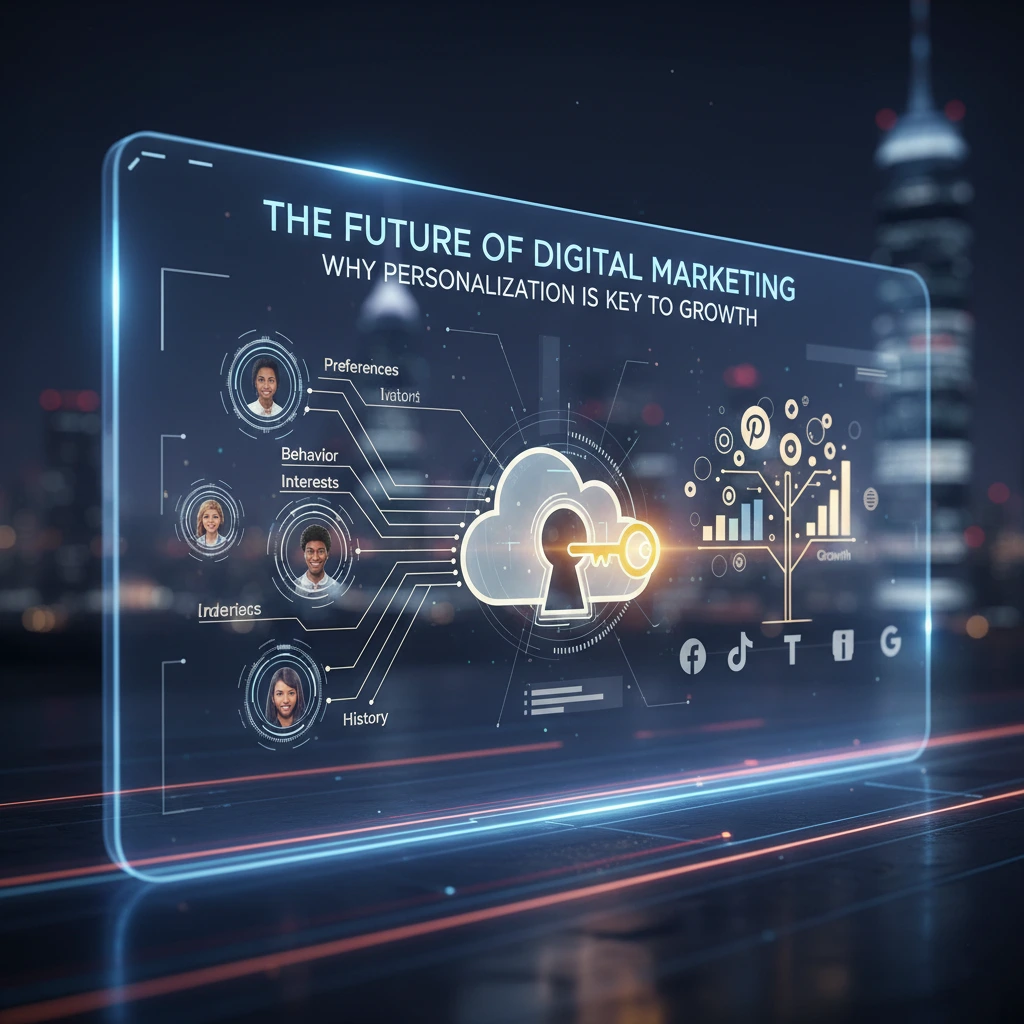
•The Change in Marketing
In the past, marketing involved sending the same message to a lot of people and hoping that it ended up getting to the right person. Consumers today want brands to provide a service and/or products on a deeper understanding of who they are; because this current consumer demand is putting personalization as the biggest growth lever.
•Personalization at Scale
From AI product suggestions, to great email campaigns; we can offer one-to-one experiences as businesses. When done with purpose and quality, it puts the customer in a place where they do not just feel like a customer, but that they are valued, important, and not targeted.
•Trends Affecting the Future
Trends like video-first content, voice search optimization, and micro influencer marketing are shaping how personalization occurs, and enabling brands to communicate in more authentic and enjoyable ways.
•The Importance to Brands
Personalization represents the potential for brands to not only create more clicks but it can build trust and foster long term loyalty but customers are very happy to be loyal to brands that actually understand them.
•The Road Ahead and the Next Steps
Let’s start with simple personalization! We can start with audience segmentation, personalized content, analytics for performance and success, both quantitative and qualitative. The future is who puts the customer at the centre.
•The Importance of Data and Privacy
The rise of personalization also brings the responsibility of ethical data handling. Customers want a personalized experience, but they also want to know how and why their data is being collected and used. Brands that find an equilibrium between personalization and privacy protection will earn customer trust and loyalty for the long haul.
•AI and Automation for Data and Personalization
With artificial intelligence (AI) and automation tools, brands now have access to substantial capability to analyze behavior and create personalized messaging. Whether it’s predictive analytics to intelligent chat-bots that provide real-time support, AI allows brands to engage the consumer in a relevant experience faster and more effectively.
•Embracing an Omnichannel Experience
Customers will interact with a brand in several touchpoints – websites, mobile apps, social media, and even at brick-and-mortar locations. True personalization requires maintaining a consistent and personalized experience across every channel. Once a consumer engages through a personalized email or a chat-bot suggestion to enhance their in-store experience, the consumer should feel that all experiences are connected.
•Emotional Personalization
While the experience should be data-driven and personalized, it is also important to recognize the importance of emotional connection. Brands that utilize a story, or the use of visuals and tone, to align with their audience’s emotional state add a whole new dimension of experience that creates a sense of belonging and trust. Emotional personalization goes beyond that of seeing the consumer as just a source of revenue.
•Challenges and Ethical Considerations
Personalization can be a powerful thing. Yet, powerful means it can be misused. Over-targeting or invasive personalization can create discomfort for consumers.
•Ethical Sustainability and Personalization
Today’s consumers value sustainability as much as they will convenience; and personalization can allow your brand to engage consumers in a commitment to sustainable choices, and the personalization can help minimize digital waste through strategically focused campaigns.
•The Constant Change
Personalization isn’t a one-shot tactic; rather, it shifts and changes with the evolution of consumer behavior and technology changes. Brands that will lead into the future will adapt sooner, invest time to listen, and continuously evolve their personalization practices.
